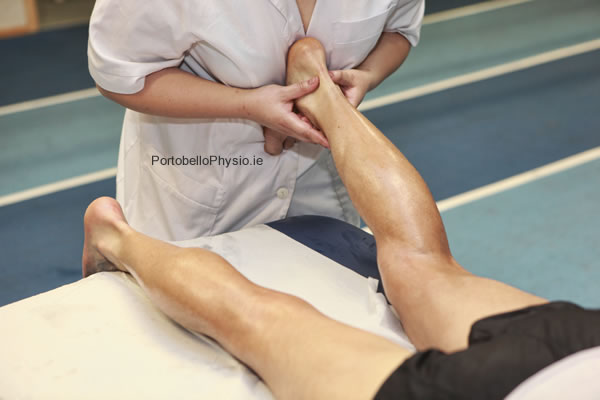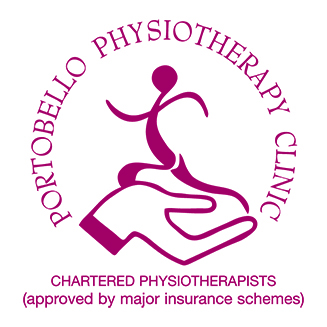Chartered Physiotherapists
Specialists in Musculoskeletal Physiotherapy
Calf Muscle Injury

The calf is made up of two separate muscles called the Gastrocnemius and the Soleus muscles. It is one of the bodies most powerful muscle groups originating at the back of the knee joint and attaching into the back of your heel bone (calcaneus) by way of the Achilles tendon. Although the calf is a strong muscle it has to withstand large tensile forces when we run or go to push off and change direction. Occasionally when too high a load is placed on the muscle a strain or complete tear can occur. The degree of pain and lost function following a calf strain will coincide with the severity of the tear. Symptoms can range from a feeling of mild discomfort at the back of the lower leg to an inability to weight bear through the affected limb due to pain and weakness. The severity of a muscle strain is graded into three categories.
- A grade one strain is where only a few muscle fibers are stretched or torn, there may be some low level pain but there is no loss of strength. In some cases those who sustain a grade one calf strain will often not be aware that they have strained the muscle at the time of injury and it is only when they have cooled down that they will feel some discomfort or pain.
- A grade two strain is a moderate strain where more of the fibers have been torn resulting in a partial tear of the muscle. There is usually swelling and bruising associated with this grade of tear and some loss of strength.
- A grade three tear of the muscle is very severe, usually this is a complete tear resulting in an inability to weight bear through the affected leg. Often with tears of this nature victims will report hearing an audible ‘pop’ and there may also be a visible dent at the site of the tear.
Treatment
Early intervention with physiotherapy is extremely important. As with all muscle strains it is advised that you apply the RICE (rest, ice, compression and elevation) principle for the first 48 hours to minimise the build-up of swelling and scar tissue formation. Recovery time will be determined by the severity of the tear but it is important that you actively rehabilitate the muscle through physiotherapy in order to minimise scar tissue formation and regain full strength and function in the muscle again. Our Chartered Physiotherapists specialise in sports injuries and are experts in managing muscles strains and returning injured athletes back to full fitness. In order to treat muscle strains we may use a combination of the following treatment methods, Deep tissue massage, dry needling, laser, and rehabilitative exercises.
Ready to take the next step?
Learn more about our Patient-Centered Approach to Care or schedule a new patient consultation.


